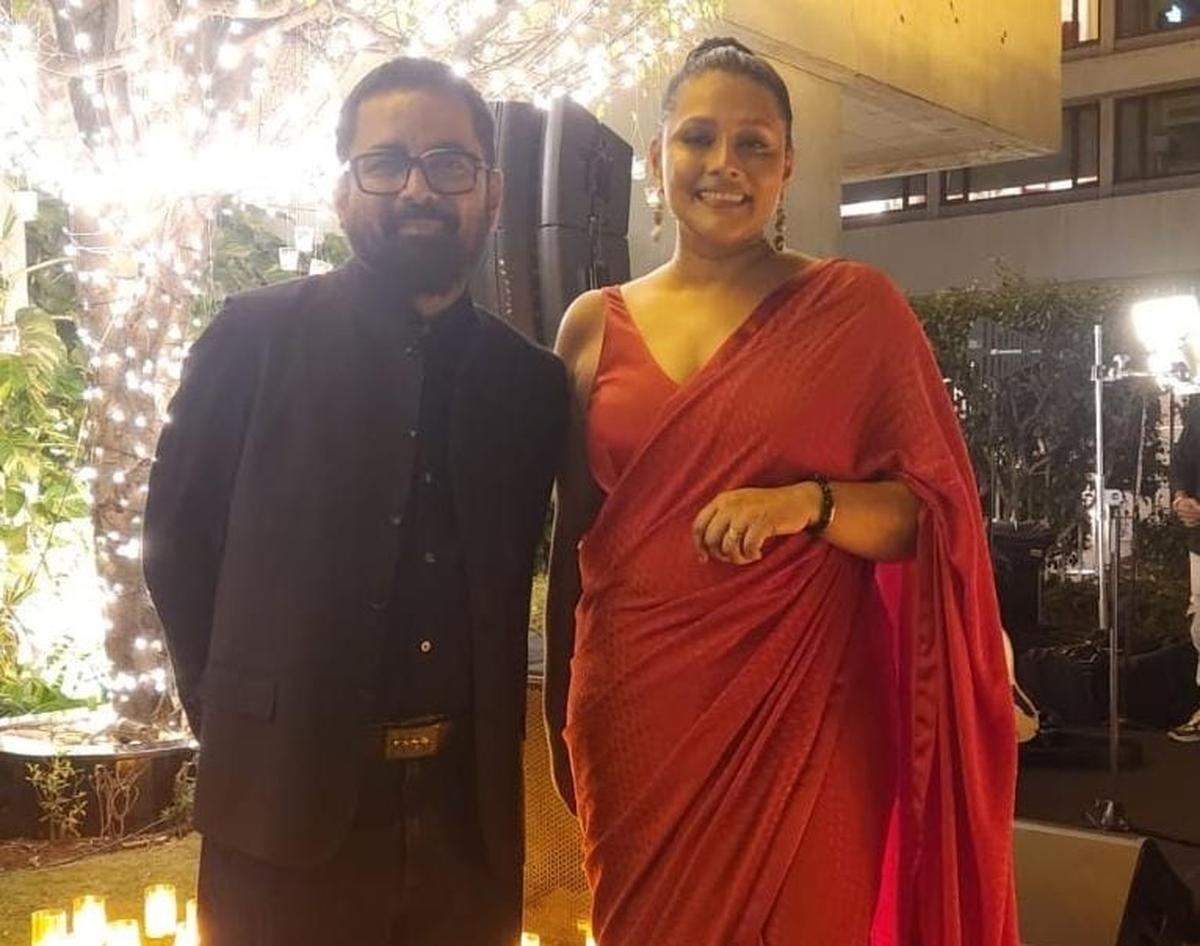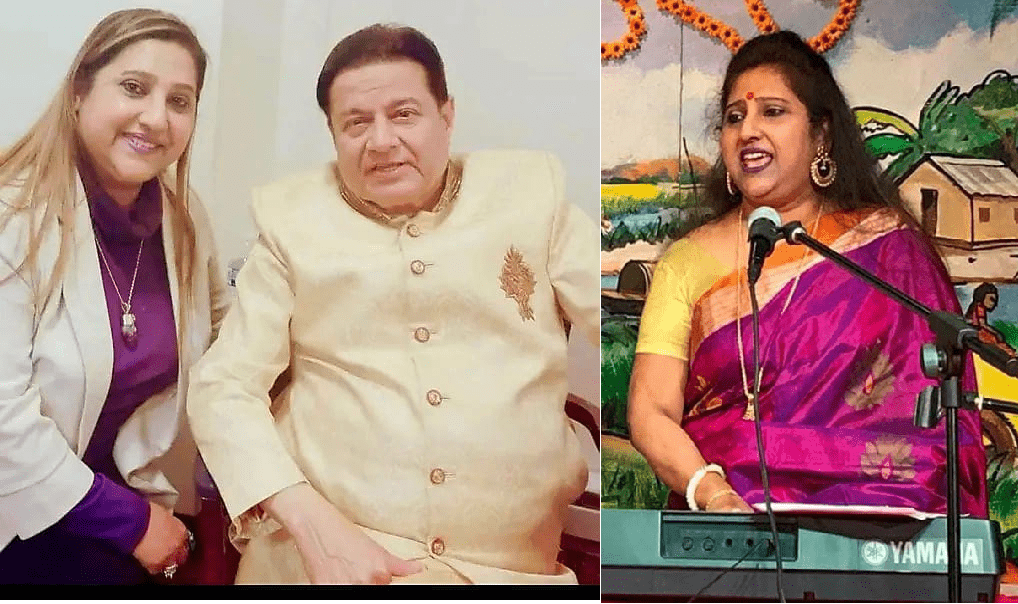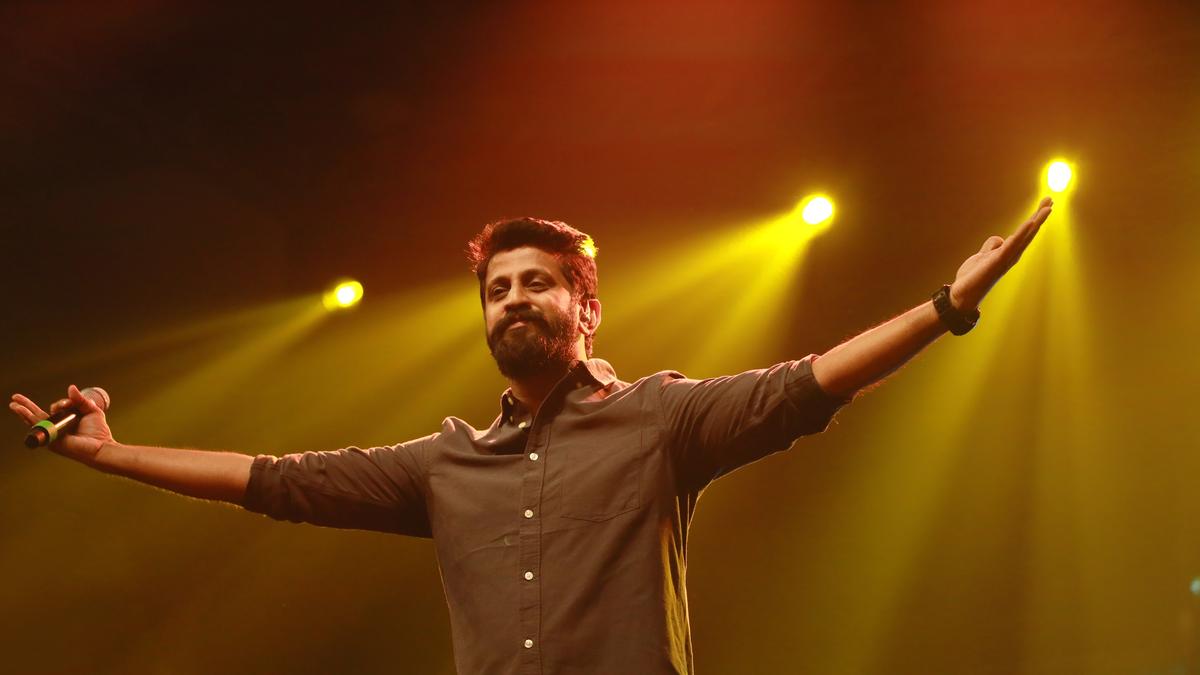[ad_1]
Speaking to The Hindu over a video call a week after the event, Vasundhara says this collaboration was deeply personal. “As a woman and a Bengali, I have always felt a strong connection to Mr. Mukherjee’s brand,” she shares. Having previously sung for one of his campaigns, the two had been discussing blending Indian music with R&B and soul influences for this event.
The collaboration took shape unexpectedly, shares Vasundhara. She had already been invited to perform at a party on January 24, a day before the grand fashion show. Then, in the middle of her preparations, she received a call from Sabyasachi himself. “He wanted me to create the finale track for him,” she recalls. “He even sang out how he was visualising the vocals.”
With Sabyasachi expanding his brand globally, the song had to strike a balance — linguistically and emotionally. The chosen piece, ‘We Shall Overcome’, was a universally recognised anthem and a historic protest song deeply rooted in Bengal’s socio-political fabric as well. “It symbolised his journey, the struggles he has faced, and his cultural breakthrough on a global scale,” Vasundhara explains.
While Vasundhara performed a live jazz set at the pre-event party, the finale song was a recorded track, produced to suit the grandeur of the runway. “The ramp setup was not suitable for a live performance. I worked with producer Rohan Rajadhyaksha and blended Bengali and English, treating the piece with an Aretha Franklin-esque sensibility”.

The decision to sing in Bengali was intentional. “Sabyasachi wanted to put his roots front and centre.” The designer’s label, ‘Sabyasachi Calcutta’, is an ode to his heritage, and the song reflected that ethos.”

Sabyasachi Mukherjee and Vasundhara Vee
| Photo Credit:
Special Arrangement
The surprises did not stop with the music. Vasundhara, usually known for her love of black, was dressed in a striking red sari specially designed for her by Sabyasachi. “Women across the country dream of wearing his saris. To have him call and say, ‘I am making you a sari for your show,’ was overwhelming.” The designer even guided her on her makeup and accessories.
While this event was a landmark moment, it was not Vasundhara’s first foray into the world of fashion. She has a long history of performing for major designers, from Rohit Bal to Ashish Soni and Bibhu Mohapatra. Each show required a unique skill set, often involving live cues from backstage and intricate coordination with designers and production teams. “Performing at fashion events is a different art form. You are not just singing; you are adapting to the rhythm of the runway.”
Awakening in school
Vasundhara credits her school choir director, Mr. Brown at DPS, RK Puram Delhi, for shaping her approach to music. “He transformed my life. He taught us instinct before theory,” she recalls. “We were genre-agnostic — what mattered was the song’s energy, the narrative, and musical etiquette.”
Vasundhara was drawn to Gospel music, Motown, and eventually jazz through the choir. She discovered jazz through tight vocal groups such as Manhattan Transfer, initially unaware that this style even had a name. “I just liked those songs, and then I learned this was called jazz.”
Despite growing up in a family with great cultural pride — her grand-uncle was P.C. Barua, the filmmaker behind the first Devdas — and her grand-aunt Pratima Barua Pandey, the renowned Goalpariya artiste from Assam — Vasundhara found herself drawn to Western styles. Though she took lessons in Hindustani classical music, she felt a deeper connection to artistes like Whitney Houston and Stevie Wonder. “Something happened when I sang their songs. I lost track of who I was and where I was. I was chasing that feeling.”
Road to becoming a singer
Like many Indian students, Vasundhara was expected to pursue a conventional career. With a father who was an IIT topper, the expectation was clear. “I was a nerd in school, good at academics. My father wanted me to carry on the legacy.” But at 15, she announced her decision to pursue music. Instead of rejecting her outright, her parents asked her to prove her merit.
Determined, Vasundhara became a “practice maniac,” winning competition after competition to earn their trust. Her math teacher, training her for IIT, even intervened, telling her parents, “This girl is born to sing”. Slowly, as she took on professional singing gigs — including voiceovers and ads — they saw her potential and gave their full support.

Science of singing
A keen researcher of vocal physiology, Vasundhara has spent 14 years studying the voice, particularly the vagus nerve’s role in singing. “This nerve connects the brainstem to the heart, the visceral organs, and the voice. It also controls micro-expressions, which is why we can tell when someone is lying just by hearing their voice.”
She demonstrates how subtle emotional shifts change the overtones of a note. “If I sing the same note with anger, the tone changes. If I sing it with relief, it shifts again. Our bodies reflect our emotions in the voice. That’s what makes music powerful.”
Despite having the technical skill to sing in various genres, Vasundhara has not pursued mainstream playback singing as a career. “I love doing film music as one-off projects, but I couldn’t build my life around it. Bollywood is disproportionately large, and while jazz has a much smaller market, I want to do what I love for the rest of my life.”
Published – February 12, 2025 01:45 pm IST
[ad_2]
Source link



